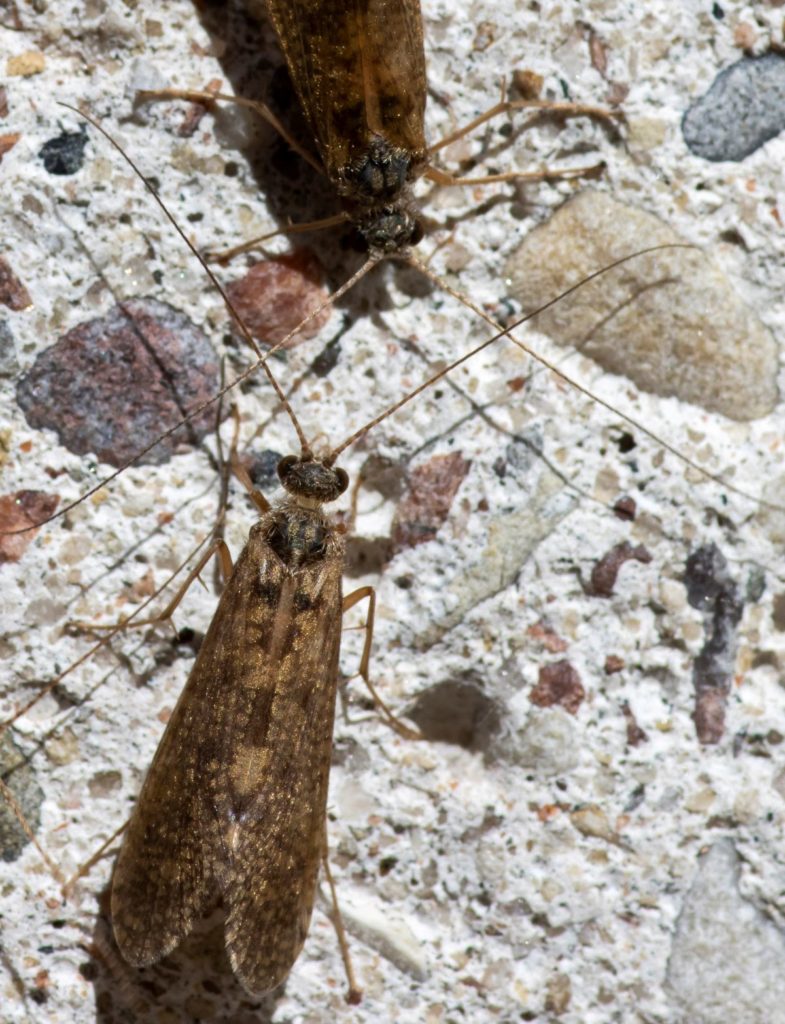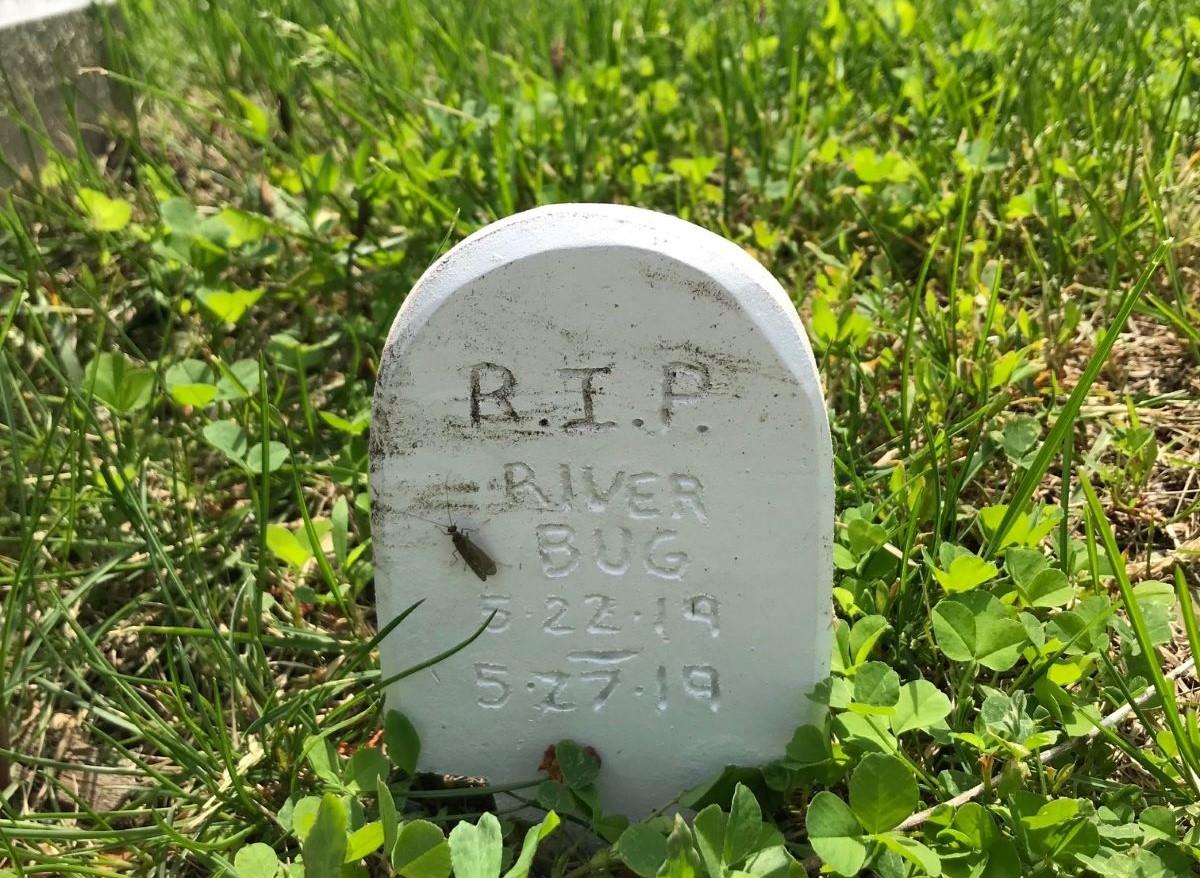We love almost everything about Spring Term on the Lawrence campus.
Almost.
We’re not so excited about the annual arrival of what students for years have called “river bugs.” Also known as “river flies.” Or their proper name, caddisflies.
The invasion, under way as we speak, is brief but annoying. If you find yourself in a swarm of caddisflies as you make your way across campus, remember three important things—survival requires a sense of humor; cursing will not help; and you best shut your mouth (literally).
But before Lawrentians get too down on these pesky visitors, let’s remember to celebrate what their presence means—a healthy river environment, or at least healthier than it once was. Call it a small price to pay for environmental progress. Lawrence’s picturesque location along the Fox River, after all, is among our school’s many charms, and we want to embrace the Fox’s improving health.
To find a little perspective, we sought out Bart De Stasio, the Dennis and Charlot Nelson Singleton Professor of Biological Sciences and professor of biology at Lawrence. He knows a thing or two about the river ecosystem. He teaches on topics such as evolutionary ecology, aquatic biology, and predator-prey interactions, and for a dozen years beginning in the mid-2000s he and his Lawrence students conducted annual studies of the Fox River to document native and invasive species.
First order of business: Are we cool to call them “river bugs”?
Sure. It’s not the scientific name, but it works, De Stasio said.
“This common name isn’t wrong, and they are more often called ‘river flies’ because we see them in the adult flying stage of life,” he said. “They are caddisflies, a type of insect that lays eggs in the river, and has juvenile stages—larvae—that live in the river attached to anything hard and stable. The juveniles spin a silk net that catches food particles from the flowing water.”

They’re back! (Photo by Danny Damiani)
It’s a long biological process that brings them back to parts of campus in swarms for a brief couple of weeks each spring. (A second generation arrives in late summer and early fall, but the swarms are not as pronounced.)
“The juveniles spend the entire winter feeding and growing slowly because of the low water temperatures,” De Stasio said. “In the spring they have grown large enough to become adults. When they mature into adults, they metamorphose and emerge from the water as the flying insects we see on campus.”
You may find it comforting to know that while these suckers show up like clockwork each spring, they are not really suckers. They swarm. They annoy. But they don’t bite. All in all, they’re really not that into you. Their only interest is in breeding, short-lived as it may be.
“The males and females synchronize their emergence to increase breeding success, thus the swarms,” De Stasio said. “The adults don’t feed or even have mouth parts during this time—they focus on finding a mate. The adults only live for about two weeks around here and females lay new eggs back in the river to produce the next generation.”
And, yes, all that activity is good news for our Fox River, which has had an often-unpleasant history when it comes to healthy living. The juvenile caddisflies are sensitive to poor habitat conditions in the river, especially low oxygen levels. If conditions are bleak, as they were when unregulated discharges of industrial and municipal waste polluted the river for a large portion of the 20th century, they don’t survive.
Thus, the annual invasion we see now signals good news, something that’s been building since river health became a regulated focus four decades ago.
“Big swarms of adult flies mean that the juveniles were able to survive in the river, a really strong signal that the river has good conditions for them,” De Stasio said. “The lower Fox River is a very productive habitat, with high amounts of algae coming from Lake Winnebago. This algae is a good food supply for the larvae.
“Another factor is that the river now has plenty of oxygen in the water. This was not always the case. From the mid-1900s up until the late 1970s, the unregulated discharges of waste from industries and cities along the lower Fox River caused high growth of bacteria in the river. Those bacteria consumed all the oxygen from the water, which prevented the river flies from surviving. After waste pollution was effectively regulated and reduced in the late 1970s, oxygen levels in the water increased and river fly populations increased.”
It’s also good news, of course, for humans. A healthy river adds to the joys of being river-side, from walking trails to kayak tours to beautiful vistas.
So, flail your arms if you must (and you must), but do so knowing that the swarm of “river bugs” ruining your campus walk is both a temporary nuisance and a long-term victory.




